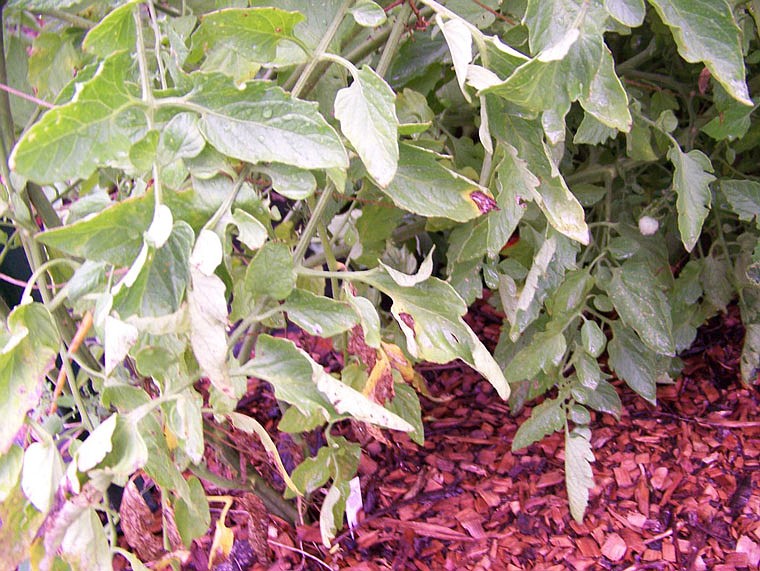Q. Is there a Master Gardener class in Jefferson City this fall?
A. Yes, we are offering a class series that starts Aug. 15. There are 12 classes, all on Monday evenings from 6-9 p.m. The last class is Nov. 14, and class will not be held on Labor Day or Halloween. The cost for the series is $135. Please contact the extension center for more information ASAP. We like to have registrations completed by the Friday before the first class (Aug. 12, which is this Friday).
Q. The Japanese beetles were bad this year. Are they done, and can I do anything to reduce them on my property? I heard there was a product I could put on my lawn.
A. Yes, they were bad this year. We were catching record numbers in our trap in mid- to late July, then they suddenly crashed that last July weekend. So the beetles are likely done for 2016, but they laid many eggs, which hatch out as small grubs this summer/fall.
Yes, there are products that can be put down to control grubs in lawns, and these can reduce Japanese beetles in your general area. You can use a natural product or a synthetic insecticide. The bad news is this habitat they like so much (lawns) is not only yours, but every adjoining neighbor, if not even farther. These beetles can easily fly -mile. There are several lawn insecticides that claim to control the grubs of Japanese beetles. They actual kill a wide variety of lawn grubs. Contact our office if you want to know these options.
The most popular natural product to apply is "milky spore," which is quite selective to Japanese beetles. For best results, milky spore should be applied in spring, summer and fall. However, a late summer application is considered ideal to start with, so do it now, in August. It's considered best because the grubs are close to the surface of the warm soil, feeding on roots. For best control, the label says to apply it for two years in spring, summer and fall (that's six times). I saw retailer had a 20-pound bag for $40, which treated 7,000 square feet. This would cost $240 for a lawn that size or $170 for a typical small lawn of 5,000 square feet. It is effective to the treated area after two years and lasts for 10-15 years. A USDA publication says it works best if it is a communitywide effort. Unfortunately, most of your neighbors probably won't want to spend that much money.
Q. I think I have some type of blight on my tomato. What can I do to stop it?
A. Blight is a term commonly used to describe a disease affecting the foliage. The heavy rains of early July would favor blights to start, and fairly regular rain and dews since then would continue its spread. For tomatoes, there are two main categories of blight: fungal and bacterial. The photo shows one of the most common fungal diseases, early blight. Another fungal disease has small, gray spots (Septoria). The bacterial diseases have more intense dark brown to black spots. Bacterial speck does not affect peppers, but bacterial spot does. Both of these diseases also can damage the fruit with similar spots/specks. For bacterial diseases, products containing copper (i.e., copper sulfate) have been proven to work, and it is a natural product (based on the element). It also aids in the control of early blight and Septoria. For these latter two diseases, a good synthetic is Daconil Liquid Concentrated Fungicide (active ingredient chlorothalonil), but this product does not control the bacterial blights. If desiring a natural product, then Serenade is labeled for control of tomato blights and uses a biological organism (commonly referred to as a biofungicide). Be sure to read the label carefully and follow all instructions and heed any warnings.
Full sun and adequate plant nutrition (especially nitrogen) are helpful for the plant to fight the disease. When the plant produces a lot of fruit, it depletes the plant. Thus, an application of fertilizer rich in nitrogen would help the plant if you haven't applied any in the last month. We always encourage gardeners to correctly identify a pest when trying to control it with pesticides. You can send a photo or stop by with a sample.
The Central Missouri Master Gardeners are a volunteer group of 191 members, 122 of whom are Cole County residents, who maintain 11 beautification sites in Cole County. Master Gardeners must complete a basic training program of at least 30 hours of horticultural training including landscaping, lawns, vegetables, flowers and fruits, as well as 30 hours of volunteer service.
Have a gardening question of your own? The Central Missouri Master Gardeners hotline is staffed from 12:30-4:30 p.m. Tuesdays and Fridays; call 634-2824 then or anytime to leave a message.

